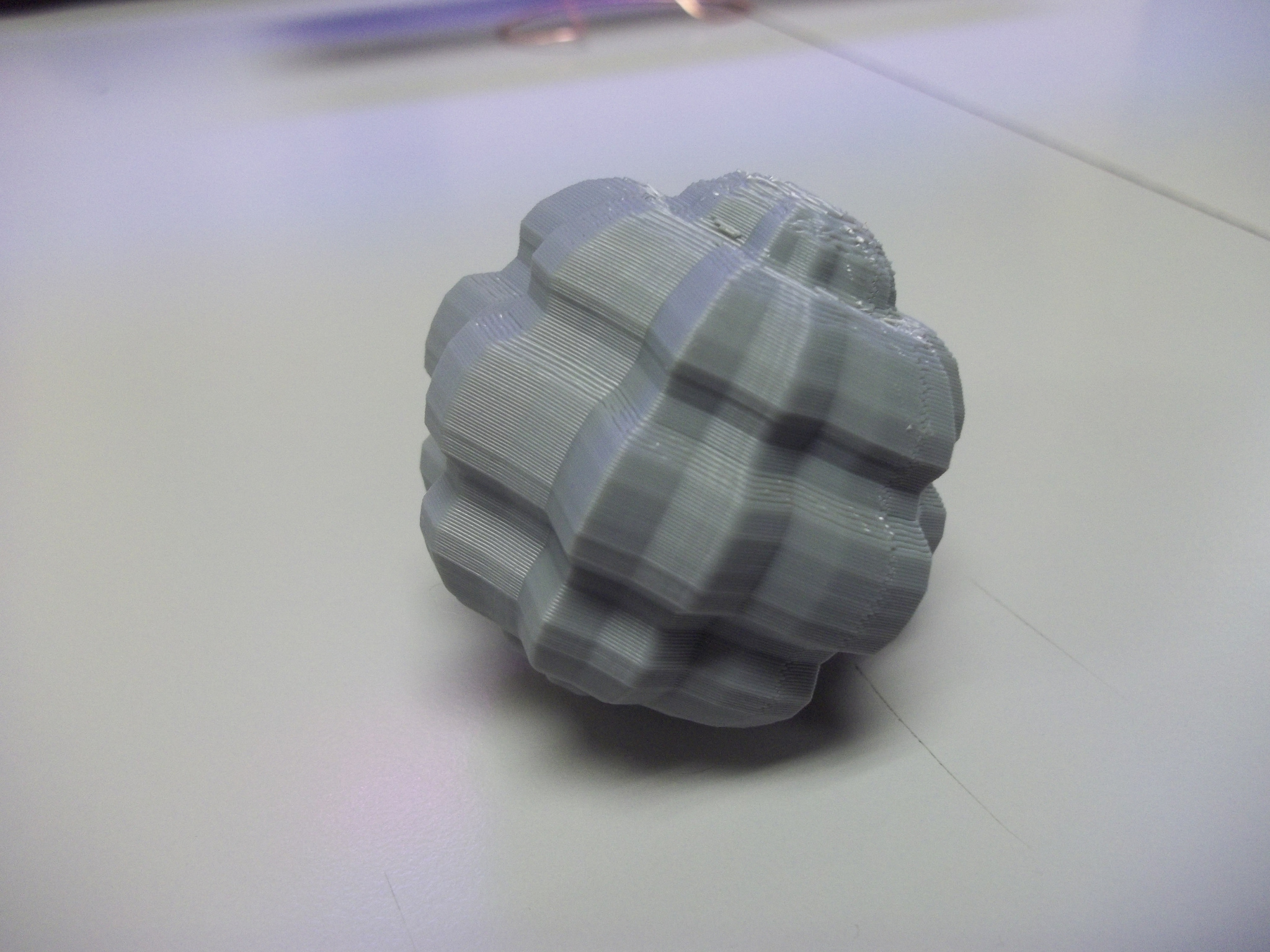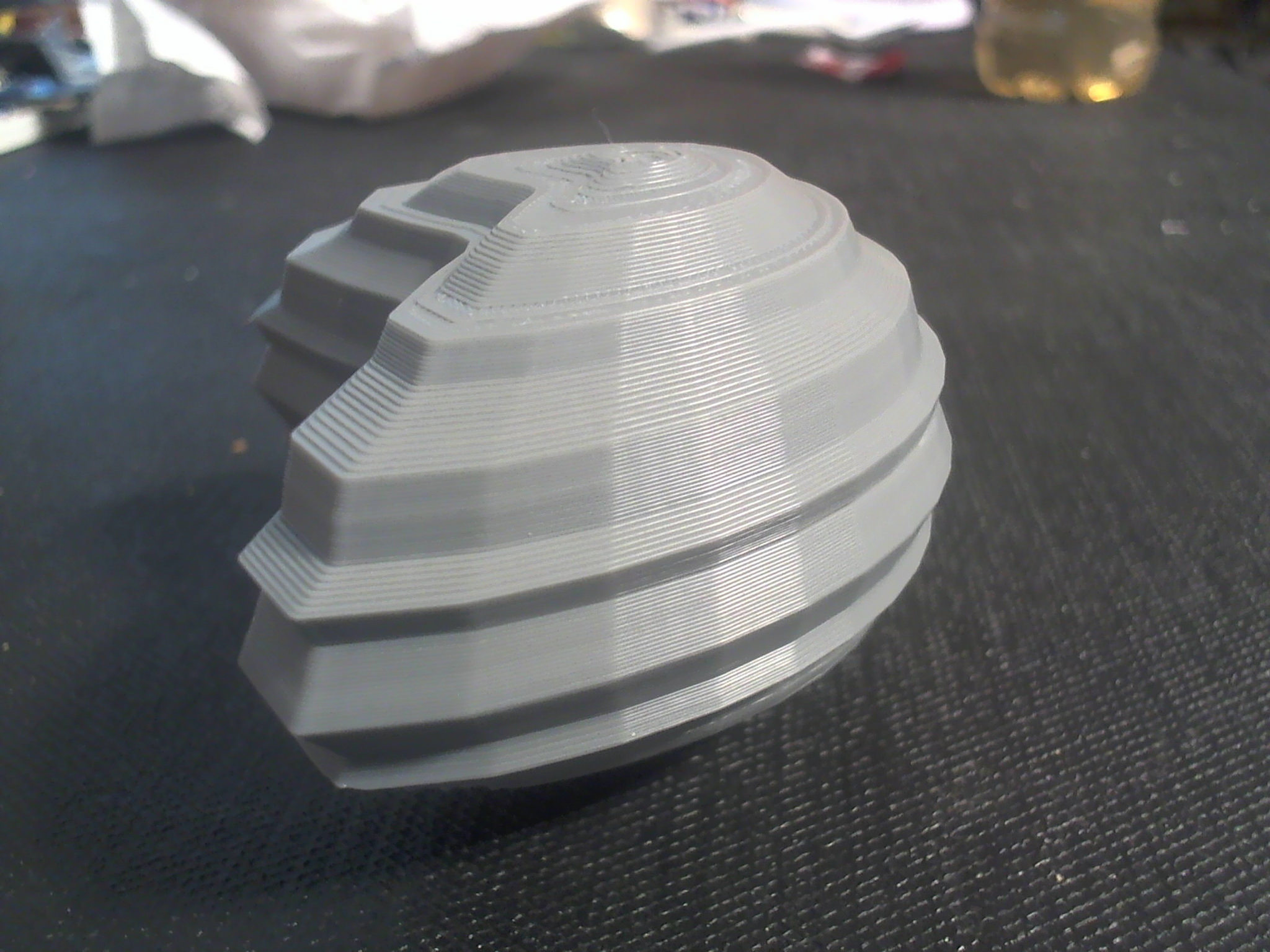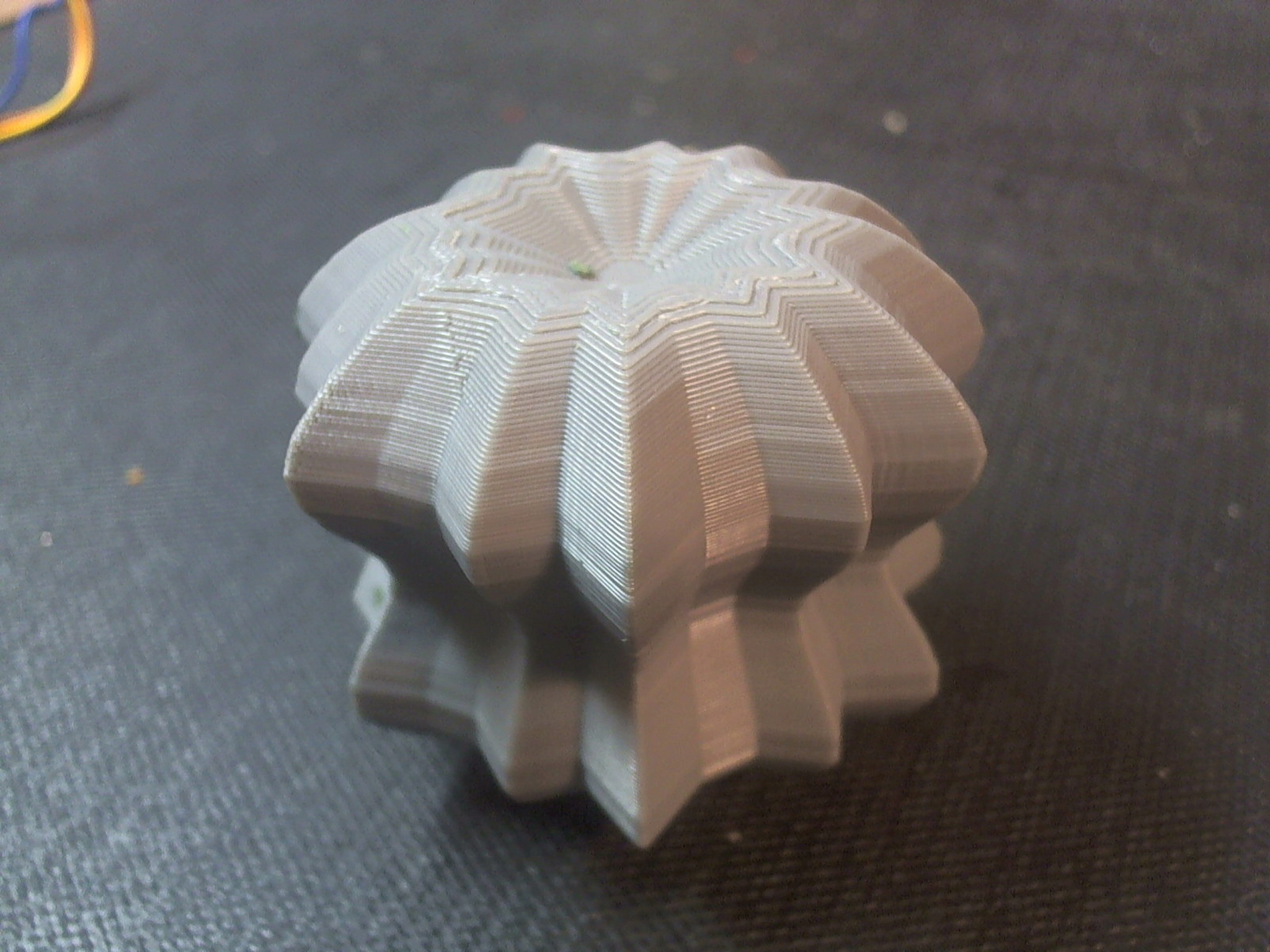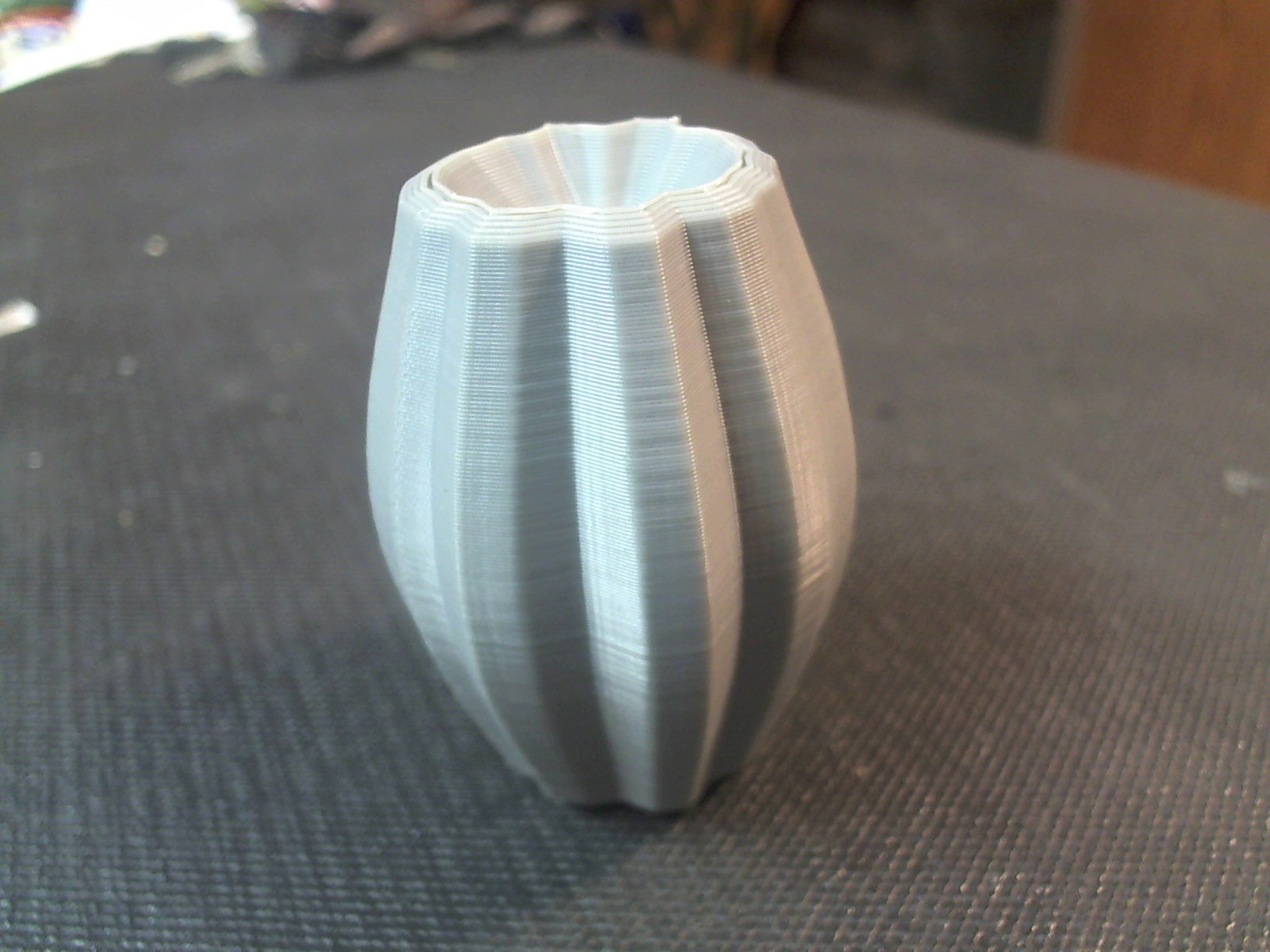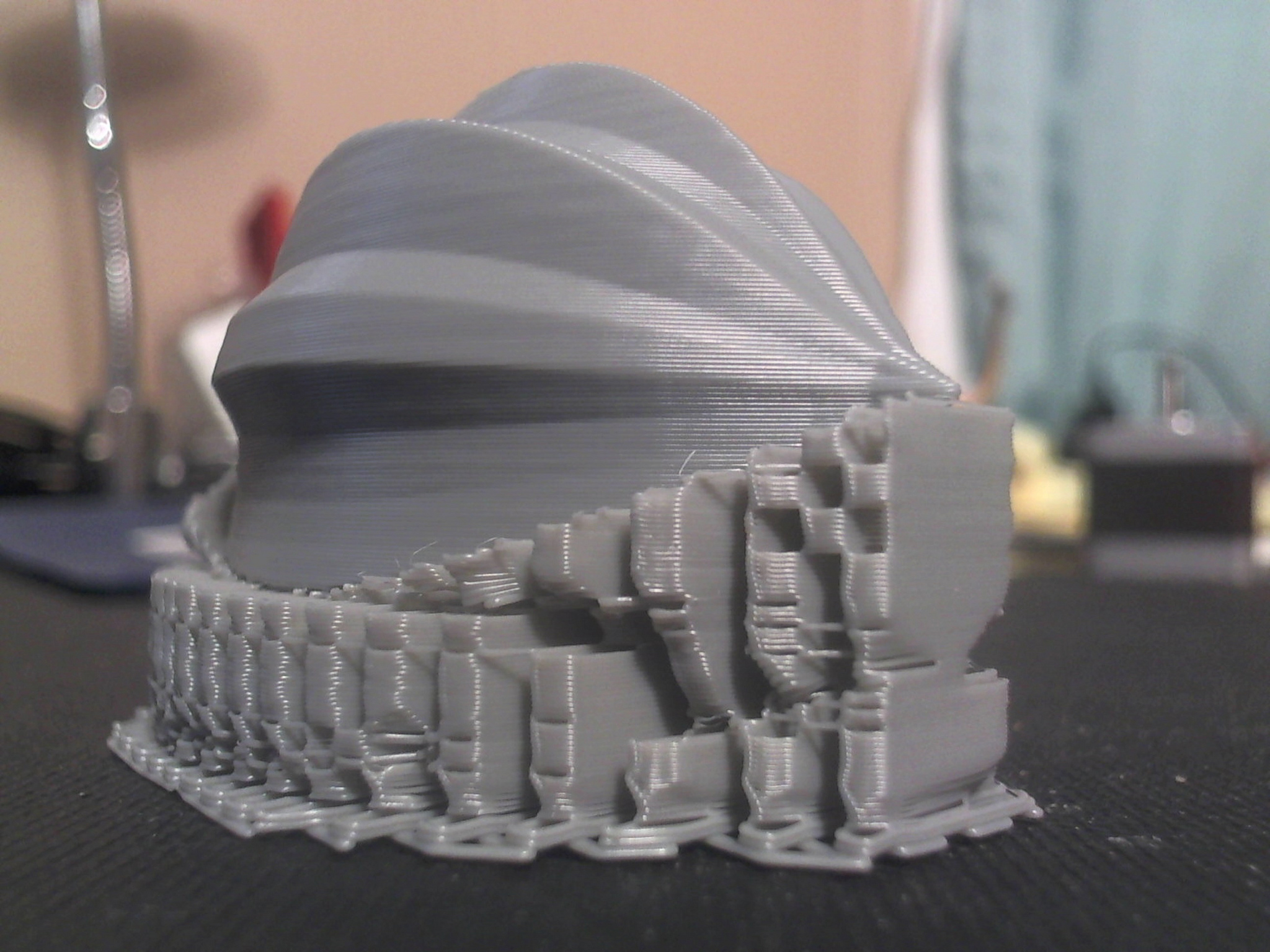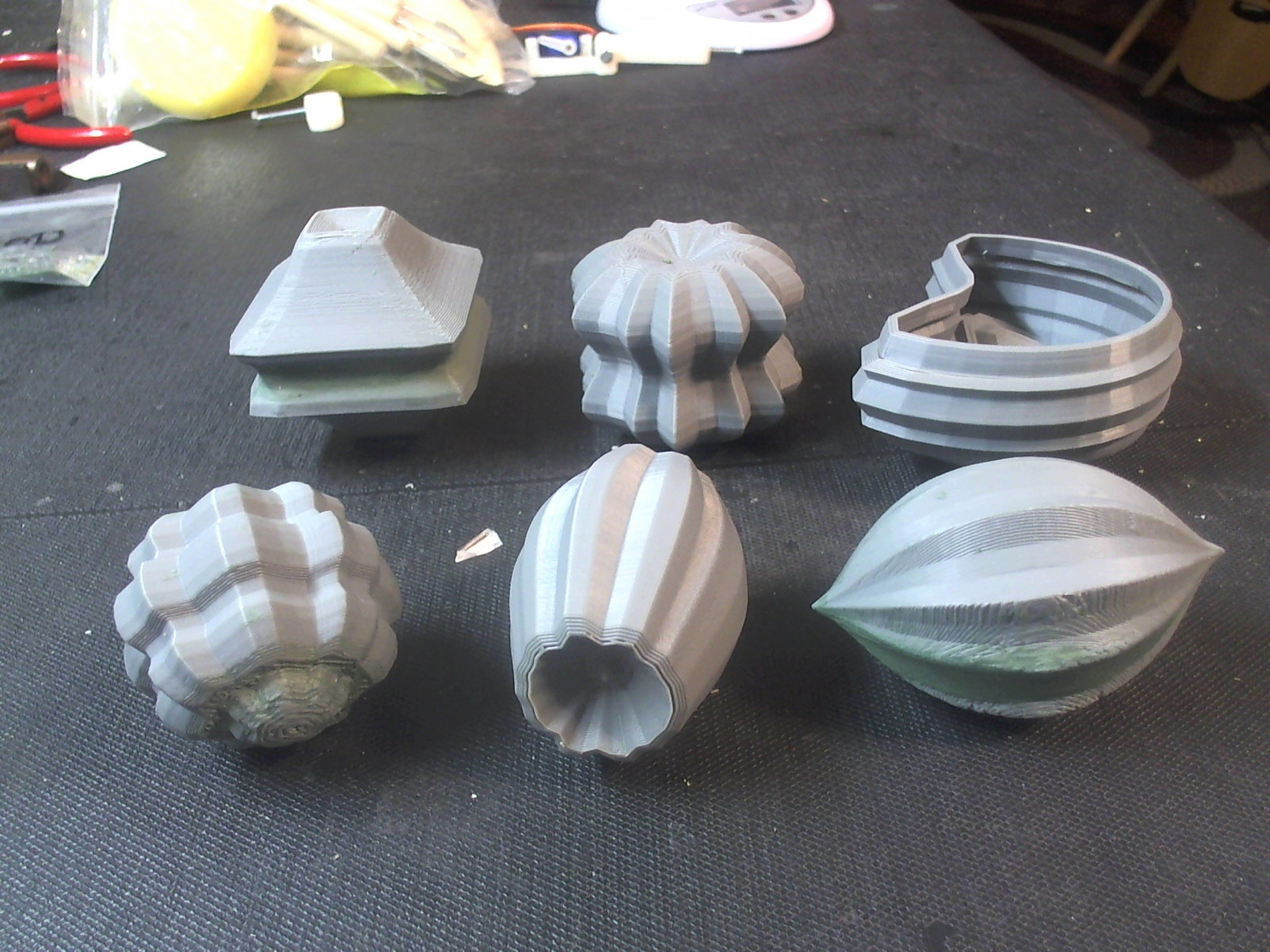
Experimenting with the superformula and 3D printing
A few months ago I cooked up a simple Processing sketch to generate 2D SVG line art using the superformula, and ever since then I’ve been a little bit obsessed with the possibilities of this mathematical equation. This formula is able to generate a pretty surprising range of interesting organic shapes, and can easily be extended into three dimensions. Now that I have access to a 3D printer, I knew I just had to print a few iterations out.
Coming up with superformula forms
 To make interesting superformula forms, it helps to have some kind of interactive interface so you can modify all the different variables quickly and see the results. I came across a very helpful sketch over at OpenProcessing.org called the Super Duper Shape Explorer.
To make interesting superformula forms, it helps to have some kind of interactive interface so you can modify all the different variables quickly and see the results. I came across a very helpful sketch over at OpenProcessing.org called the Super Duper Shape Explorer.
I simply used the sketch’s keyboard controls to fly through the variables and find shapes that looked interesting to me. Once I came across a form that looked cool, I wrote down the values of each of the variables so I could render the same form in a different app that allows for STL export.
Once I had the variable values figured out, I plugged them into a very helpful OpenSCAD script on Thingiverse that generates 3D forms ready for STL export. Before long, I had a set of 6 STL models ready for 3D printing.
Printing the superformula forms
With the STL models generated, I brought them into ReplicatorG and sliced them up using 0% infill, 2-3 shells and 0.27mm layer height, with Exterior vertical support as needed. They all came out perfectly, and I’m very happy with their weight, strength and balance!
I’m thinking about creating 2-part plaster molds of some of these, and I’m also working on using OpenSCAD to create ready-to-print molds by subtracting the STLs from cubes (more on that soon!). So far so good!
